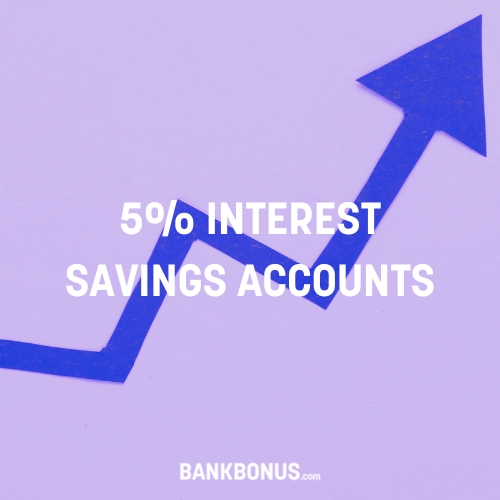If you’re ready to start investing but aren’t sure which direction to take, it’s never a bad idea to start small. Short-term investments can get you in the game without over-committing. They can also give you a general sense of how investment accounts work.
In this post, I’ll talk about some of the best opportunities available right now for short-term investing.
You’ll learn about risk management and also gain some insight into how to pick the investment opportunity that’s right for you.
5 Best Short-Term Investments
Here are the best short-term investment options for 2024:
- High-Yield Savings Accounts
- Certificates of Deposit
- Money Market Accounts
- Short-Term Bond Funds
- Exchange Traded Funds
1. High-Yield Savings Account (HYSA)
If you have a savings account with an Annual Percentage Yield (APY), you’re already investing. Simply put, your APY is the percentage of your average balance that you earn on interest over the course of a year. If you’re working with a big, traditional bank, chances are that APY is quite low and earning basically nothing. For example, banks like Chase and Bank of America regularly keep their rates as low as 0.01%.
This is where you should consider a high-yield savings or checking account instead. HYSAs are widely available through online banks or credit unions and offer significantly higher interest rates than the national average. They also tend to come without traditional banking fees or minimum balance requirements, making them a great short-term investment. Plus, an online savings account is about as low-risk as it gets. Unlike the stock market, you cannot lose money with a savings account. The more you put in the account, the more you’ll earn — it’s as simple as that.
The downside here is that lower risk comes with a lower return. Even the highest APY can’t match the earning potential of higher-risk investments, so don’t expect to get rich. That said, it’s hard to argue against what’s essentially free money.
As you poke around for the perfect HYSA, there are a couple of things to look for. First, any financial institution you’re considering should be FDIC-insured. The Federal Deposit Insurance Corporation covers balances up to $250,000, so your money is protected if the bank fails. Otherwise, just make sure you can hit the minimum deposit requirement and that the account comes with all the features you need.
¹Annual Percentage Yield (APY) is accurate as of 1/17/2024 and subject to change at the Bank’s discretion. The minimum deposit required to open an account is $500 and a minimum balance of $0.01 is required to earn the advertised APY.2. Certificates of Deposit (CDs)
A CD is a type of interest-bearing savings account. Like a HYSA, CDs almost always offer high interest rates that outpace traditional accounts.
CDs are available with most banks, and there are several different types. The main thing that makes a CD different is your access to the money in the account. Unlike a checking account, where you can use a debit card to spend or withdraw funds at the ATM, the money in a CD is effectively frozen.
Here’s how it works:
When you open a CD, you agree to a certain term length with your bank. Terms can range from a month to multiple years. By setting your term, you agree to keep those funds in the account until the term ends. For this reason, you shouldn’t think of a CD as an emergency fund.
Fortunately, most CDs do allow you to make withdrawals if you’re in a pinch, but not without a price. Each CD is different, but most include an early withdrawal penalty that’ll seriously cut into the interest you’ve earned. So, just make sure you know what you’re getting into.
In addition, CDs often offer the best APY that a given bank has, and some even allow for a boosted rate as you get further in your term. And when your money is tied up in a CD, there’s less of a temptation of pulling your money out and missing out on returns. The bottom line is that as long as you don’t access your cash before the maturity date, a high-interest CD is a solid low-risk short-term investment.
3. Money Market Funds & Accounts
The money market is a component of the economy focused on short-term debt investments. Essentially, it consists of financial institutions that deal in cash or credit and act and lenders or borrowers. Don’t worry if this doesn’t make much sense. You don’t need to know all the ins and outs to get involved. For now, all you need to know is that the money market involves massive exchanges of capital, and you can invest in it at the retail level.
Overall, there are three main ways for you to invest in the money market: Money market mutual funds, treasury bills, or a money market account.
Money Market Funds
Money market funds are low-risk and highly liquid, making them an ideal short-term investment. Like a stock market mutual fund, a money market fund consists of a diversified group of assets. Instead of stocks, these funds contain cash and debt-based securities.
Money Market Accounts
A money market account is similar but operates as a deposit account instead of an investment account. Though money market rates aren’t as appealing as they used to be, they’re generally still within range of an HYSA. Plus, money market accounts usually offer more flexibility than savings. Most money market accounts come with an optional debit card, so you have easier access to your money.
Treasury Bills
Treasury bills, known as T-bills, are short-term debt obligations issued by the US government. T-bills are used for various things but are typically issued when the government is aiming to fund a public project. As an investor, you can purchase a T-bill, which is effectively a loan you’re making to the government (which they pay back with interest). T-bills have a maximum maturity of one year, making them an attractive short-term option.
4. Short-Term Bond Funds
A bond is a debt security that you can purchase, which entitles you to repayment (with interest) from the issuer. There are a bunch of different types, including US government bonds (treasury bills), municipal bonds, and corporate bonds.
In general, bonds are considered lower-risk investments than stocks. In fact, many investors use bonds as a sort of security blanket in their portfolios. This type of diversification can help mitigate the risk of stock investments with higher volatility.
A short-term bond is one that matures in one to four years. A short-term bond fund consists of a diversified group of these bonds and might include a combination of government, corporate, and municipal.
In general, short-term bond funds are considered low-risk and relatively low yield. That said, there’s still some risk here, so you can expect higher returns than a HYSA or money market account. While short-term bond funds might not offer the same earning potential as stocks, they’re still among the most efficient options when it comes to short-term investing.
5. Exchange-Traded Funds (ETFs)
If you want to get into stock trading but want a low-risk option, consider looking into ETFs. An ETF is a fund that consists of a group of diversified securities, including stocks, bonds, or commodities.
If you’re familiar with mutual funds, this all probably sounds familiar. However, the main difference between the two is what makes ETFs appealing.
Unlike a mutual fund, which is valued once daily when the market closes, an ETF operates like an individual stock. This means that the value of an ETF changes throughout the trading day, and you can buy or sell whenever the market is open.
So, to put it pretty simply, think of an ETF as a lower-risk, diversified stock. You can get into ETFs by using most brokerage accounts, including robo-advisors.
What Is a Short-Term Investment?
When we talk about short-term investments, it’s easy to think of a get-rich-quick scheme. However, these types of opportunities are gambles, not investments.
A short-term investment is a type of investment that you can convert into cash in the near future. Depending on who you ask, there’s a wide range of what’s considered short-term, but it’s typically anywhere between three months and five years. Still, instead of thinking in terms of months or years, focus on the liquidity of an investment. That is, how easily can you convert that asset into money in your bank account? If you can do it quickly, chances are the opportunity qualifies as a short-term investment.
On the other hand, illiquid investments (e.g., real estate) are almost always considered long-term investments. Generally speaking, you can expect a higher return from a long-term investment, but it takes more time to cash in.
Frequently Asked Questions
What is the best short-term investment at the moment?
It totally depends on your financial goals, risk tolerance, and time frame. It might seem like a non-answer, but the reality is this: If there was one investment that was the consensus best, everyone would put all their money into it.
With this in mind, ask yourself some questions. How much do you expect in a potential return? How much do you have to invest? How quickly do you need an investment to pay off?
If you can understand what’s possible within your goals, it’ll simplify things. As long as you focus on a low-risk, progressive investment, you should be able to find something that works for you.
How can I invest $10,000 in the short term?
If you have $10,000 to invest in the short-term, you have plenty of options. But, again, it comes down to how you want that money to work for you.
The thing to keep in mind is how much access you need to that money. If it’s your emergency fund, it belongs in a HYSA. If it’s play money that you can afford to dedicate to growth, you might consider an ETF, or crypto.
No matter how you choose to invest, always keep risk in mind. Never put money you cannot afford to lose in a compromising position.
Where can I invest $50,000 for one year?
It totally depends on how aggressive you want to be, along with how flexible you can be with that money.
With $50,000, you’re looking at some exciting returns. Even a HYSA with a 1.00% will net around $500 after a year.
However, with this level of investment income, you might be at a point where you’re considering longer-term investments. Whether you’re putting a down payment on an investment property or heading in another direction, you can count on higher returns if you can wait it out.
What is the best way to invest $5000?
The best investments are the ones that align with your personal goals. They should also reflect your current financial position. For example, if $5,000 is your entire savings, you want to place it in a risk-free investment vessel like a HYSA. However, if you just got an unexpected bonus at work and can afford a little more risk, you can take more chances.
At the end of the day, the best way to invest any amount of money is to be patient. While we’d all love a quick turnaround, these types of opportunities can be hard to come by. It might not be as exciting, but the best way to safely and sustainably invest is to focus on low-risk, consistent returns. Then, as you build up your portfolio, your returns will grow if you stick with it.
What’s Your Short-Term Investing Strategy?
Personal finance isn’t about getting rich quickly. As much as you might like to make a ton of cash in a short period of time, you’re looking at a ton of risk. But, with a quality short-term investment strategy, you can take what you have and turn it into more over time.
By understanding basic investing principles and setting tangible goals, you can steadily grow your net worth. If you can, consult with a financial advisor and thoroughly research any investment before putting money down.
Overall, investing can be complicated and intimidating, but it also isn’t rocket science. Even if you don’t have experience, there are plenty of short-term opportunities to get your money moving.
Now that you have a good idea of where to start, you can decide what’s right for you. Once you have your feet under you, you can move on to bigger (and maybe more lucrative) opportunities. Investing is a process, and the more you commit to learning and adapting, the more you’ll see your balances grow.






Comments are closed.
Comments are closed here.